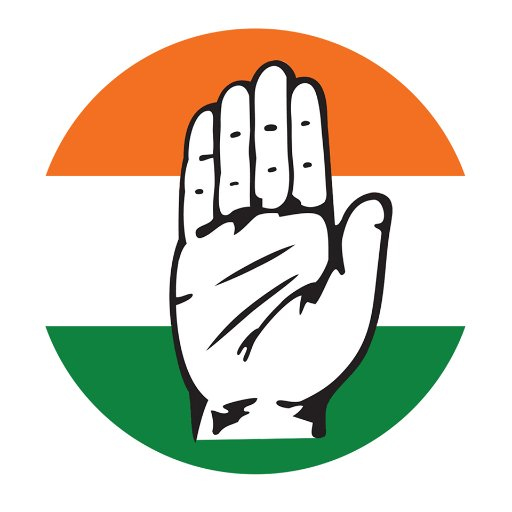Nitish Kumar’s Decline and the Rise of India Gathbandhan Under Rahul Gandhi’s Influence

- Dr. Shashi Kumar Singh, Ph.d., D.litt.
The 2025 Bihar Assembly Elections are shaping up to be a pivotal moment for the state, with Chief Minister Nitish Kumar, who has ruled for nearly 20 years, facing intense criticism for corruption, unemployment, and stalled development. Public discontent is at its peak, and Nitish’s “Paltu Ram” (turncoat) reputation has eroded his credibility. Meanwhile, the India Gathbandhan, led by Rahul Gandhi and Tejashwi Yadav, is gaining momentum with a strong anti-incumbency narrative. Rahul Gandhi’s deep connection with the masses is having a profound impact on Bihar’s public sentiment, making a change in government increasingly likely. This article analyses the current situation in Bihar, the failures of the Nitish government, and the prospects of the AllIndia Alliance, with an analysis of the impact of Rahul Gandhi.
Nitish Kumar’s tenure since 2005 was initially marked by progress in infrastructure, education, and healthcare, earning him the title “Sushasan Babu” (Mr. Good Governance). However, recent years have seen a sharp decline in governance quality. Corruption allegations have tarnished his image, with the Comptroller and Auditor General (CAG) flagging the non-submission of utilization certificates for projects worth ` 70,877 crore, pointing to significant financial mismanagement. There is a perception among the public that the Nitish government is now resorting to political diplomacy only to retain power.
Unemployment is a burning issue in Bihar, with over 50% of survey respondents, particularly those aged 18-34, citing it as their primary concern. Nitish’s government has been criticized for failing to create jobs, leaving the youth disillusioned. In contrast, Tejashwi Yadav, during his stint as Deputy Chief Minister, claimed to have generated 4-5 lakh jobs, a narrative that resonates with young voters. The India Gathbandhan is capitalizing on this issue, with Rahul Gandhi’s leadership amplifying the call for employment and addressing migration, a chronic problem in Bihar.
Nitish Kumar’s frequent political flip-flops have severely damaged his credibility. He parted ways with the BJP in 2013, formed the Mahagathbandhan in 2015, rejoined the BJP in 2017, returned to the Mahagathbandhan in 2022, and switched back to the NDA in 2024. This opportunism has earned him the moniker “Paltu Ram,” with many in Bihar saying, “Nitish is Paltu Ram; you can’t trust his next move.” This perception of unreliability could prove costly in the 2025 elections, as voters grow weary of his political maneuvering.
Tensions within the NDA, particularly between Nitish’s JD(U) and the BJP, are also mounting. During a recent Delhi visit, Nitish avoided meetings with BJP leaders and skipped a key meeting called by Union Home Minister Amit Shah. The BJP’s Delhi unit refused to allocate seats to JD(U) for the Delhi assembly elections, signaling cracks in the alliance. This discord presents an opportunity for the India Gathbandhan, as speculation about Nitish Kumar potentially switching sides again adds to the NDA’s instability.
The India Gathbandhan, comprising the Rashtriya Janata Dal (RJD), Congress, and Left parties, has emerged as a formidable opposition force. Tejashwi Yadav has strengthened his appeal among youth and marginalized communities by focusing on unemployment and social justice. However, Rahul Gandhi’s ability to connect with the masses is the coalition’s trump card. His simplicity, direct engagement with the public, and commitment to social justice have established him as a credible leader, inspiring hope among Bihar’s rural and urban voters, particularly the youth and marginalized communities.
Rahul Gandhi’s influence in Bihar has grown significantly in recent years. His public outreach initiatives have brought him closer to the people, allowing him to effectively highlight issues like unemployment, education, and migration. His leadership style, rooted in direct dialogue with the masses, has positioned the India Gathbandhan as a strong alternative to the NDA. Rahul’s presence is strengthening public sentiment for a change in government, as he consistently exposes the failures of Nitish’s administration and offers a vision of inclusive development.
Recently, Rahul Gandhi and Tejashwi Yadav showed solidarity during the Bihar Bandh when they led a “chakka jam” agitation against the voter-list revision.Citing the Maharashtra voter-list scam, Rahul Gandhi termed it a conspiracy against democracy. The movement has created deep resentment among Dalit and poor voters, who may vote in favour of the All India Alliance.Rahul Gandhi’s influence is playing an important role in organizingthis resentment and converting it into votes.
Law and order is another area where Nitish’s government faces scrutiny. RJD Chief Lalu Prasad Yadav claimed over 65,000 murders occurred under Nitish’s rule, highlighting governance failures. Political strategist Prashant Kishor has compared the current situation to Lalu’s “Jungle Raj,” but younger voters, unfamiliar with that era, are more focused on Nitish’s recent shortcomings. This shift in sentiment favors the India Gathbandhan, as Rahul Gandhi and Tejashwi Yadav effectively highlight these issues in their campaigns.
Nitishs Kumar’s recent populist announcements, such as connecting six towns with commercial flights and building a Sita Temple, have failed to impress voters due to a lack of credible implementation. In contrast, the India Gathbandhan’s welfare-oriented agenda, centered on jobs, education, and social justice, is gaining traction. Rahul Gandhi’s leadership amplifies this agenda, connecting with voters on a personal level and strengthening the coalition’s electoral prospects.
In conclusion, Bihar is on the cusp of change. Nitish Kumar’s long reign, once synonymous with progress, is now marred by corruption, unemployment, and distrust. Rahul Gandhi’s deep connection with the masses and Tejashwi Yadav’s youth appeal position the India Gathbandhan as a strong contender. If the coalition sustains its momentum and leverages Rahul Gandhi’s leadership effectively, the 2025 elections could see the end of Nitish’s rule and the rise of the India Gathbandhan to power. Rahul Gandhi’s influence is proving to be a game-changer in Bihar’s political landscape.
The author is General Secretary, Vichar Vibhag, All-India Congress Committee, New Delhi







